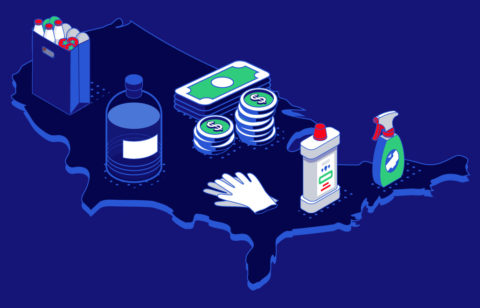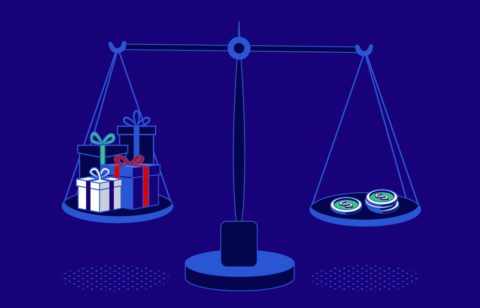We all know that spending less than what you earn is the best way to give your finances a boost. It is not enough that you earn more money. In fact, it doesn’t matter how much money you make. Some people earn a six-figure income and still have a lot of debt. The amount indicated in your paycheck does not define how financially successful you are.
If you analyze the American spending habits, you will realize that spending is actually something that is deeply ingrained in us. We’ve had our ups and downs but we just cannot stop spending. While you can argue that we need to spend in order to be comfortable, you have to admit that the American way of spending is quite different. Think about it, if something is broken, we usually throw it and buy something new. In some cultures, they fix whatever is broken. They are not quick to throw it.
The bottom line is, as a nation, we spend a lot. Even if the economy is showing signs of improvement, a lot of American households cannot feel it because their spending habits are keeping them from improving their financial lives.
You know that spending less than what you earn is important but we continue to let ourselves be influenced by what we see around us. Here’s an interesting article from WSJ.com. According to the research from the Federal Reserve Bank of Philadelphia, there is a rise in the bankruptcies filed by the neighbors of lottery winners. Surprising, right? The article said that economists have a theory about this. Knowing how Americans spend, they think that these neighbors tried to keep up with these big lottery winners in terms of asset accumulation. Keeping up with the Joneses is still true today.
What makes spending below your income hard to do
Despite everything that we went through during the Great Recession, people are still showing signs that they cannot control their own spending. According to an article published on MoneyCrashers.com, our spending is actually hardwired into our brains. Experts reveal that our brain chemistry influences our financial habits. Apparently, this is how spenders and savers are differentiated. In the study, Journal of Consumer Research, Rik, Cyder and Loewenstein reported the brain scans and their observations of consumer behavior. When the participants make buying decisions, it showed specific brain activities that could explain why we react to money the way we do. The participants were asked to make buying decisions and their brain was observed. It turned out that we have an area in our brain called the insula and it is what will help us stop spending. Whenever you go through something unpleasant, this part of our brain is stimulated. If we experience something unpleasant while spending and it keeps on happening, the insula can help us stop spending. If we experience pleasure as we spend – which is what most of us feel, that will make us spend more.
But beyond this brain activity, there are other reasons why spending less than what you earn is difficult to do. Here are some facts of life that we have to face.
We live in a consumerist society.
We cannot help but spend because we have to. Money is needed to make our lifestyle convenient, and comfortable. If you want food, you have to pay for it. If you want to own a house, you have to buy one. If you want to drive a car, you have to spend money to get it. The same is true for clothing, water, electricity and everything else that we need. Our economy is actually dependent on our spending. The more we spend, that is a sign that our country is financially improving. You can expect that the government will encourage us and even pass laws that will make us spend more.
Millions are spent to encourage consumers to spend.
This is in relation to the first. Since our economy is driven by consumer spending, you can assume that companies will be spending millions on campaigns and advertisements that will make you want to spend. Everywhere you look, there is a billboard, an advertisement, a commercial, or an endorser telling you to get your money and spend it on something.
It is hard not to compare.
Another thing that makes spending less than what you earn so difficult is that we always compare ourselves with others. According to an article published on PsychologyToday.com, we are “comparison junkies.” Even while we were young, we are compared or we compare ourselves to those around us. When someone has something we don’t, we are compelled to get the same thing.
We think our possessions define our success.
Because of the other three, we grow up with the knowledge that our possessions define who we are and what we have accomplished. You can say that you believe otherwise and you may agree that this thinking is materialistic and thus wrong. But at the end of the day, when you see your neighbor pull up with a new car or a huge TV, you will automatically picture yourself doing the same.
All of these prove that spending less than what you earn involves something deeper than just the act of not spending. You have to change your mindset in order for your to improve your habits. This is very important. If you really want to bring your finances to the next level, you need to control how much you will spend so you can keep your finances on its potential to grow.
Is it enough to spend below your means?
But then again, when it comes to financial success, is it really enough for you to work on spending less than what you earn?
The answer is no.
It is the first step. That is all there is to it. What will really bring your finances up a notch is what you will do with the money that you will not spend.
The answer to that is quite simple. You have to invest. This is how you can grow your personal wealth. It is not enough that you save what you did not spend. You need to put it somewhere it can grow fast. You leave it there so it can earn you some profit. There are a couple of ways that you can accomplish this.
Invest in stocks, bonds, mutual funds, or equity.
This is the best way to make your money work for you. There are many investment options out there and you need to study them so you will know which one suits your financial goals best. If your financial situation can afford to take high risks, you should invest in stocks. If you want a low-risk investment, bonds are good for you. Just remember that the higher the risk, the greater profit you will earn.
Invest in your future.
Another thing that you should do is to invest in your future self. Of course, this refers to your retirement. Most of the time, retirement funds are placed in investments that will make them grow. But unlike the other type of investments, you can only withdraw from this fund when you retire. At least, if you do not want to pay a penalty for that withdrawal. By saving for your future, you are setting yourself up to have a comfortable life. If that will not make spending less than what you earn motivating, what will?
Invest in a knowledge or skill.
Finally, you want to invest in improving your knowledge or skill. At first, this will seem like an expense. But if you improve yourself, you will increase your value and your ability to increase your income. That will help you earn more so spending less is easier to accomplish. Just make sure that when you get a salary increase, you will not increase your lifestyle with it. Every upgrade in your life will make spending less harder to do.
To motivate your further here is a video from National Debt Relief that discusses how spending less than what you earn can help you build your wealth.







